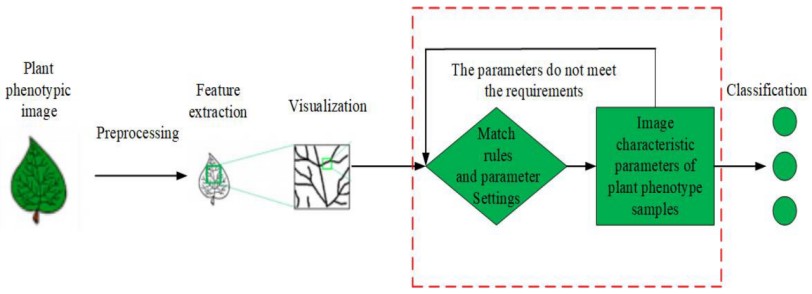Plant Phenotype Imaging Analysis quantifies the morphological, structural, and functional characteristics of plants through image processing and analysis techniques. It can help researchers acquire a large amount of data and extract information about the phenotypic characteristics of plants. Lifeasible provides high-quality plant phenotype imaging analysis services, including morphological parameters, chlorophyll, root imaging, and other analytical projects.
 Figure 1. Plant phenotypic image recognition technology based on deep learning. (Xiong et al., 2021)
Figure 1. Plant phenotypic image recognition technology based on deep learning. (Xiong et al., 2021)
Lifeasible's plant phenotyping analysis provides essential data support and decision-making basis for plant scientific research, agricultural production, and plant breeding. By accurately and efficiently analyzing the phenotypic characteristics of plants, we can gain a deeper understanding of plants' biological characteristics and environmental adaptability, and promote plant improvement and sustainable agricultural development.
Infrared thermography can detect the thermal radiation on the plant surface, reflecting the plant's temperature distribution and thermal state. By analyzing infrared thermal images, it is possible to assess plant transpiration, water status, heat tolerance, and other characteristics, providing information for research on plant adversity response and water management.
Multi-spectral imaging uses spectral information from multiple bands to acquire image data of plants. By analyzing the reflection or absorption characteristics of different bands, information about plant chlorophyll content, leaf health, and plant physiological status can be obtained.
Plant phenotypic imaging analysis can use image processing tools to measure and analyze morphological parameters of plants, such as leaf area, leaf shape, leaf vein network, leaf angle, plant height, root length, and so on. These morphological parameters can provide information about plant growth and development and plant response to environmental and adversity factors.
Chlorophyll fluorescence imaging is a method of assessing the photosynthetic efficiency and light energy use efficiency of plants by capturing the chlorophyll fluorescence signal emitted by plant leaves. By analyzing chlorophyll fluorescence images, information about the plant's photosynthetic activity, light energy uptake, and energy conversion can be obtained to assess the physiological status and health of the plant.
Root imaging analysis can obtain morphological and structural characteristics of the root system, such as root length, root diameter, root branching, and distribution through root image data. This helps to understand the growth and development patterns of the plant root system and the adaptation of the root system to the soil environment.
Plant imaging analysis can obtain information on multiple parameters, such as morphological, physiological, and fluorescence parameters. By comprehensively analyzing these parameters, the growth, development, and physiological state of the plant, as well as its response to environmental factors and adversity, can be fully understood.
With the help of plant imaging technology, high-resolution image data can be captured, allowing us to see the microstructure and details of plants. This technique helps to study leaf morphology, cell structure, root distribution, etc., in greater depth.
Plant imaging technology has a high temporal resolution and can acquire image data in real-time or quickly.
Lifeasible, as a professional plant imaging platform, provides high-quality imaging analysis services along with related platform services to provide customized solutions for customers. If you are interested in our services, please do not hesitate to contact us anytime.
Reference